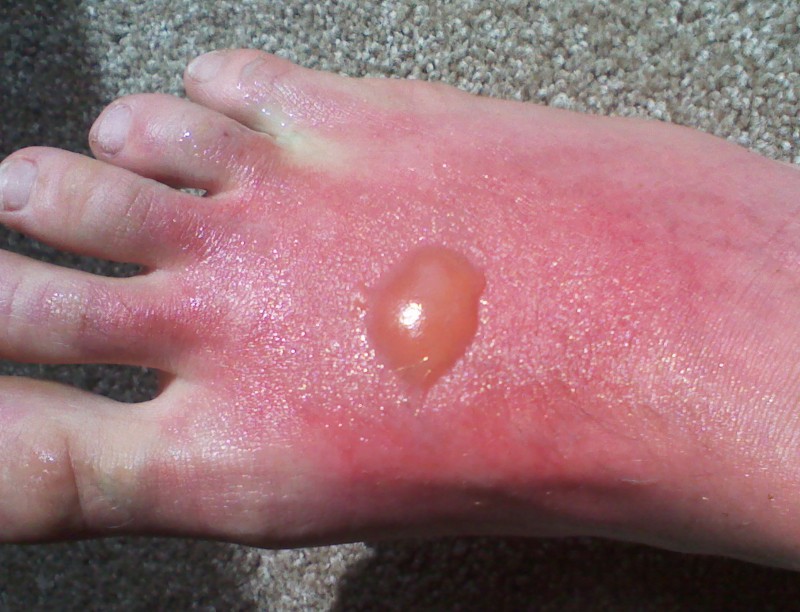When we think about sunburn, our minds typically conjure images of sun-kissed skin displaying the harsh and vivid colors of overexposure. Most often, we consider areas with higher sun exposure, such as our faces, arms, and shoulders. However, there’s a less commonly acknowledged part of our anatomy that can also experience the burning effects of UV rays: the bottom of our feet. This article delves into the nuances of foot sunburn, exploring how it occurs, its symptoms, prevention methods, and what to do if you find yourself in this peculiar predicament.
Understanding Sunburn: The Basics
Sunburn manifests as a result of the skin’s reaction to ultraviolet (UV) radiation. This radiation, primarily from the sun, can provoke an inflammatory response in the skin, leading to pain, redness, and peeling. While the epidermis, or outer layer of skin, is the primary site of sunburn injury, one might wonder how the soles of our feet—often shielded by footwear—can fall prey to this plight.
Interestingly, the soles of our feet are comprised of thicker skin compared to other areas of our body, equipped with multiple layers to withstand friction and pressure. However, this thickened skin does not render them immune to sunburn. In certain situations, such as walking barefoot on sandy beaches, these areas can become vulnerable. The reflective properties of the sand can amplify exposure, causing the soles of the feet to absorb UV radiation significantly.
How Foot Sunburn Occurs
Foot sunburn typically occurs under specific circumstances. When one walks barefoot outdoors or wears sandals, the soles may not receive adequate protection from UV rays. Additionally, activities in reflective environments, like sandy or snowy beaches, increase the likelihood of sun exposure to the bottom of the feet. In essence, the feet can get sunburned when they are directly exposed to sunlight without protection, especially on bright, sunny days.
Symptoms of Foot Sunburn
The symptoms of a sunburned foot closely resemble those experienced in other parts of the body. Initially, individuals may notice a tingling or warm sensation after sun exposure. Shortly thereafter, the skin can develop redness, varying in severity from mild discoloration to deep crimson hues. In more severe cases, blisters can form, leading to potential pain and discomfort. Peeling may occur as the skin heals, revealing fresh layers and prompting further care and attention.
It’s crucial to monitor for signs of severe sunburn, which may warrant medical attention. If you experience extreme pain, swelling, or fever, it may indicate a more serious burn. Similarly, if blisters become infected or do not heal properly, consulting a healthcare professional is advisable.
Prevention: Keeping Your Feet Safe
A proactive approach is essential to prevent foot sunburn. Here are several strategies to protect your feet:
- Use Sunscreen: Apply a broad-spectrum sunscreen with an SPF of at least 30 to the soles of your feet, especially before outdoor activities. Ensure coverage includes often-overlooked areas such as the tops of the feet and the sides.
- Footwear Matters: Whenever possible, opt for closed-toe shoes or sandals that cover more of your feet. This will serve as a protective barrier against direct sunlight.
- Avoid Peak Sun Hours: The sun’s rays are the fiercest between 10 a.m. and 4 p.m. Limiting outdoor activities during these hours can reduce exposure significantly.
- Stay in the Shade: When enjoying outdoor environments, make a point to take breaks in shaded areas. This helps alleviate continuous and direct exposure to UV rays.
What To Do If You Get Sunburned Feet
If you do find yourself with sunburned feet, swift action can help mitigate discomfort. Begin by moving to a cooler environment, reducing heat exposure. Treating the sunburn involves a few straightforward steps:
- Cool Compress: Apply a cool, damp cloth to the affected areas for short intervals. This can provide immediate relief from burning sensations.
- Hydrate: Drink ample water to help rehydrate your skin and maintain internal balance. If the sunburn is extensive, consider fluids with electrolytes.
- Moisturize: Use soothing lotions or gels containing aloe vera or other calming ingredients to nourish the skin. Avoid products with alcohol, as these can further irritate the skin.
- Pain Relief: Over-the-counter pain relievers, like ibuprofen or acetaminophen, can alleviate pain and reduce inflammation.
Conclusion: Awareness is Key
Sunburn on the soles of your feet might not be a common topic of conversation, but it’s an important reality to address. Being aware of the potential for this unique form of sunburn can encourage individuals to take adequate precautions while enjoying sunny days outdoors. Understanding how foot sunburn occurs, recognizing its symptoms, and knowing preventive measures can empower you to protect yourself better.
So, the next time you venture out into the sun, don’t forget about your feet! With the right steps, you can ensure your outdoor experiences remain enjoyable and sunburn-free.
